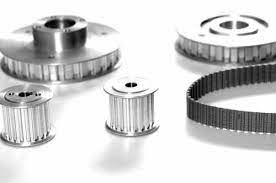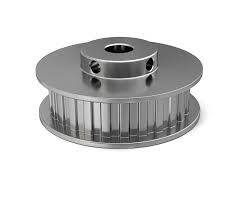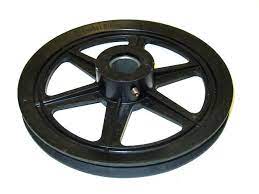Product Description
| Certification | ISO9001:2018 SGS TS16949 |
| Quality | 100% Inspection |
| Machining equipment |
CNC maching,CNC Turning, CNC Milling ,CNC center machine, auto lathe machine, Wire-cutting Machine CNC punching machines, CNC bending machines CNT stamping machine, CNC/auto lathe machine , Drilling machine, Hydraulic machine,Riveting machine , Tapping machine, welding machine, Film attaching machine Aluminum extrusion machine,Casting machine,Plastic injection machine,etc. |
| Materials |
Aluminum, Steel, SPCC, SGCC,SECC, SPTE,Stainless steel, Brass, Copper, Bronze, ABS, PC, PO, POM, Nylon, etc. |
| Surface finish |
Anodized, Oxide, Plating, Brushing, Polishing, Blackened, Powder coating, Sandblasting, Laser engraving Zn-plating, Ni-plating, Cr-plating, Tin-plating, copper-plating, the wreath oxygen resin spraying, the heat disposing, hot-dip galvanizing, black oxide coating, painting, powdering, color zinc-plated, blue black zinc-plated,rust preventive oil, titanium alloy galvanized, silver plating, plastic, electroplating, anodizing etc. |
| Inspection Equipment |
CMM, Projection, Calipers, Micro caliper, Thread Micro caliper, Pin gauge, Caliper gauge, Pass meter, Pass meter etc. |
| Drawing formation | PDF, CAD/DWG/DXF, IGS/STP etc. |
We focus on CNC processing ,cold heading and casting and sheet metal machining services, with more than 150 processing equipment and professional testing equipment, and several professional engineers. We focus on developing the field of hardware parts and provide customers with OEM and ODM services. Through years of accumulation, we have accumulated rich experience and inventory. Our customers have spread all over the world. In order to meet the requirements of different customers, we are constantly expanding our Production capacity and R&D capacity, look CHINAMFG to cooperating with you.
1.We have Specialized QC testers to check the products quality according to customers’ needs.
2.We have IQC to check the dimensions and surface of the incoming material.
3.We have PQC to inspect full-course during the processing.
4.We have FQC to inspect all the plating products from outsides and make the 100% inspection before the shipments.
FAQ
Q1: Why choose ZheJiang n?
To provide our customers with first-class services in the supply of quality screws minimizing costs.
Q2: How is quality ensured?
All our processes strictly adhere to ISO9001:2018 procedures. We have strict quality control from producing to delivery. Our company had strong technology support, 80% of our colleagues are master or bachelor’s degree. We have cultivated a group of managers who are familiar with product quality , good at modern concept of management.
Q3: Can You Strictly Follow The Tolerance on The Drawing And Meet The High Precision?
Yes, we can, we can provide high precision parts and make the parts as your drawing.
Q4: How should I order and make payment?
By T/T, for samples 100% with the order; for production, 30% paid for deposit by T/T before production arrangement, the balance to be paid before shipment. negotiation accepted.
Q5: What’s your Delivery Time?
Standard parts: 7-20days
Non-standard parts: 15-25days
We will make the delivery as soon as possible with the guarantee quality
Q6:How to Custom-made (OEM/ODM)?
If you have a new product drawing or a sample, please send to us, and we can custom-made the as your required. We will also provide our professional advices of the products to make the design to be more realized & maximize the performance.
Q7:Which mode of transport would be better?
In general, the product are heavy, we advice to make delivery by sea, Also we respect your views of other transportation as well.
/* March 10, 2571 17:59:20 */!function(){function s(e,r){var a,o={};try{e&&e.split(“,”).forEach(function(e,t){e&&(a=e.match(/(.*?):(.*)$/))&&1
| Certification: | CE, ISO |
|---|---|
| Pulley Sizes: | Custom |
| Manufacturing Process: | CNC Machining |
| Samples: |
US$ 100/Piece
1 Piece(Min.Order) | Order Sample Custom
|
|---|
| Customization: |
Available
| Customized Request |
|---|
.shipping-cost-tm .tm-status-off{background: none;padding:0;color: #1470cc}
|
Shipping Cost:
Estimated freight per unit. |
about shipping cost and estimated delivery time. |
|---|
| Payment Method: |
|
|---|---|
|
Initial Payment Full Payment |
| Currency: | US$ |
|---|
| Return&refunds: | You can apply for a refund up to 30 days after receipt of the products. |
|---|
What is the significance of proper alignment and tensioning in drive pulley systems?
Proper alignment and tensioning are critical factors in the performance and longevity of drive pulley systems. They play a significant role in ensuring efficient power transmission, reducing wear and tear, and preventing premature failures. Here’s a detailed explanation of the significance of proper alignment and tensioning:
Alignment:
Proper alignment refers to the correct positioning of the drive pulleys in relation to each other and other system components, such as belts, shafts, and bearings. It is crucial for the following reasons:
- Efficient Power Transmission: Misaligned pulleys can cause the belts to run at an angle, resulting in increased friction and energy loss. This inefficiency can lead to reduced power transmission and decreased overall system performance.
- Reduced Wear and Tear: Misalignment puts excessive stress on the belts, pulleys, and other components. This can lead to accelerated wear and tear, resulting in increased maintenance and replacement costs. Proper alignment helps distribute the load evenly, minimizing stress and extending the lifespan of the components.
- Prevention of Belt Slippage: Misalignment can cause belts to slip or derail from the pulleys, leading to a loss of power transmission and potential damage to the belts. Proper alignment ensures that the belts remain securely engaged with the pulleys, preventing slippage and maintaining reliable operation.
- Optimal Belt Tracking: Correct pulley alignment helps maintain proper belt tracking, ensuring that the belts stay centered on the pulleys and run smoothly. This prevents the belts from rubbing against the pulley edges or adjacent components, reducing friction and minimizing the risk of belt damage.
Tensioning:
Proper tensioning refers to the appropriate adjustment of belt tension in drive pulley systems. It is crucial for the following reasons:
- Optimal Power Transmission: Adequate belt tension is necessary for efficient power transmission. Insufficient tension can result in belt slippage, reducing the transfer of power from the drive pulley to the driven pulley. On the other hand, excessive tension can overload the system, leading to increased wear and power losses.
- Maintaining Belt Grip: Proper tensioning ensures that the belts maintain sufficient grip on the pulleys, especially when transmitting high torque or operating under heavy loads. This prevents belt slippage and ensures reliable power transfer.
- Prevention of Belt Damage: Improper tensioning can cause excessive stress on the belts, leading to stretching, cracking, or premature failure. By maintaining the correct tension, the risk of belt damage is minimized, resulting in longer belt life and reduced downtime.
- Reduced Noise and Vibration: Inadequate tensioning can cause belts to vibrate or produce noise during operation. Proper tensioning helps dampen vibrations, resulting in smoother and quieter system performance.
Overall, proper alignment and tensioning are essential for optimizing the performance, reliability, and longevity of drive pulley systems. They contribute to efficient power transmission, reduced wear and tear, prevention of belt slippage, and minimized maintenance costs. Regular inspection and adjustments should be performed to ensure that the drive pulley system remains properly aligned and tensioned throughout its operation.
What role do drive pulleys play in automotive engines and accessory drive systems?
Drive pulleys play a crucial role in automotive engines and accessory drive systems, contributing to the proper functioning of various components and systems. They are responsible for transferring power from the engine to auxiliary components, such as the alternator, water pump, power steering pump, and air conditioning compressor. Here are the key roles of drive pulleys in automotive engines and accessory drive systems:
1. Power Distribution:
Drive pulleys are responsible for distributing power from the engine’s crankshaft to various accessory components in the vehicle. They are typically connected to the crankshaft by a drive belt or serpentine belt. As the engine rotates, the drive pulleys transmit rotational motion to the connected accessories, enabling them to perform their respective functions. By efficiently distributing power, drive pulleys ensure the proper operation of essential components.
2. Belt Routing:
Drive pulleys assist in determining the belt routing in automotive accessory drive systems. The pulleys are strategically positioned to guide the belt along the desired path, ensuring proper engagement with each accessory component. The correct belt routing is crucial for optimal power transfer, belt tension, and overall system performance. Drive pulleys serve as guiding mechanisms, contributing to the proper alignment and operation of the belt in the system.
3. Speed and Torque Conversion:
Drive pulleys, in conjunction with the belt or pulley size ratios, enable speed and torque conversion in automotive accessory drive systems. By varying the size ratio between the driving and driven pulleys, different speed and torque relationships can be achieved. This allows the accessories to operate at their required speeds and generate the necessary torque for their functions. Drive pulleys play a role in adapting the engine’s rotational speed and torque to match the specific requirements of each accessory component.
4. Load Management:
Drive pulleys help manage the load on the engine by driving auxiliary components only when needed. For example, the alternator is driven by a pulley that converts rotational motion into electrical energy to charge the battery and power the electrical systems. By engaging the alternator only when necessary, the load on the engine is reduced during acceleration, improving overall engine performance and fuel efficiency. Drive pulleys contribute to load management and optimize the balance between power generation and engine output.
5. System Synchronization:
In some automotive engines, drive pulleys play a role in system synchronization. For instance, engines with variable valve timing mechanisms may utilize pulleys with adjustable timing marks or teeth. These pulleys help synchronize the movement of the camshafts with the crankshaft, ensuring precise valve timing and optimizing engine performance. Drive pulleys contribute to the synchronization of critical engine components, enhancing efficiency and power output.
6. Tensioning and Belt Alignment:
Drive pulleys assist in maintaining proper belt tension and alignment in automotive accessory drive systems. Tensioning pulleys, also known as idler pulleys, are used to apply tension to the belt, ensuring it remains properly engaged with the drive and driven pulleys. Belt alignment is essential for preventing slippage, reducing wear, and maximizing power transfer efficiency. Drive pulleys, along with tensioning pulleys, help maintain optimal belt tension and alignment, contributing to the overall reliability and performance of the accessory drive system.
7. System Reliability and Serviceability:
Drive pulleys play a role in ensuring the reliability and serviceability of automotive accessory drive systems. Well-designed pulleys with durable materials and proper groove profiles minimize wear and extend the life of the drive belt. Additionally, drive pulleys are often designed for easy installation, adjustment, and replacement, simplifying maintenance tasks. This contributes to efficient servicing and reduces downtime in automotive engines and accessory drive systems.
In summary, drive pulleys are integral components in automotive engines and accessory drive systems. They facilitate power distribution, belt routing, speed and torque conversion, load management, system synchronization, tensioning, and belt alignment. By performing these roles, drive pulleys contribute to the reliable and efficient operation of auxiliary components, enhancing the overall performance of automotive engines.
How do drive pulleys contribute to the efficient transmission of power?
Drive pulleys play a crucial role in ensuring the efficient transmission of power in various mechanical systems. Their design and function enable the transfer of rotational motion and torque from a driving source, such as an engine or motor, to driven components, such as belts, chains, or shafts. Here’s how drive pulleys contribute to the efficient transmission of power:
1. Power Transfer:
Drive pulleys provide a mechanical interface between the driving source and the driven components. They transmit power from the driving source to the driven components, allowing them to perform their intended functions. By maintaining a solid connection and effective power transfer, drive pulleys minimize energy losses and maximize the efficiency of the system.
2. Speed and Torque Conversion:
Drive pulleys are often used in conjunction with belts or chains to convert speed and torque between the driving source and the driven components. By varying the size ratio between the driving and driven pulleys, different speed and torque relationships can be achieved. This allows for the adaptation of power output to meet the specific requirements of the driven components, optimizing efficiency and performance.
3. Mechanical Advantage:
Drive pulleys can provide mechanical advantage in power transmission systems. By utilizing different-sized pulleys or multiple pulley arrangements, such as pulley systems with multiple belts or chains, the mechanical advantage can be increased. This enables the driving source to exert a greater force or torque on the driven components, enhancing efficiency and enabling the handling of higher loads or resistance.
4. Belt Tension and Grip:
In belt-driven systems, drive pulleys contribute to efficient power transmission by maintaining proper belt tension and grip. The design of the pulley rim, such as V-grooves or toothed profiles, ensures optimal engagement with the belt, preventing slippage and ensuring efficient power transfer. By effectively gripping the belt, drive pulleys minimize energy losses due to slipping or excessive friction, thereby improving overall efficiency.
5. Alignment and Stability:
Drive pulleys help maintain proper alignment and stability in power transmission systems. They guide the movement of belts, chains, or shafts, ensuring that they remain in the desired position and track correctly. Proper alignment reduces friction and wear, minimizing energy losses and improving the overall efficiency of the system. Additionally, stable and well-supported drive pulleys prevent vibrations and misalignment, which can lead to decreased efficiency and increased wear.
6. Load Distribution:
Drive pulleys distribute the transmitted power evenly across the system. They help distribute the load or force exerted by the driving source to the driven components, ensuring balanced power transmission. This balanced load distribution minimizes stress concentrations and prevents premature wear or failure of system components, contributing to overall efficiency and longevity.
7. Maintenance and Serviceability:
Efficient power transmission is also facilitated by the maintenance and serviceability features of drive pulleys. Properly designed pulleys allow for easy installation, adjustment, and replacement of belts, chains, or other driven components. This simplifies maintenance tasks, reduces downtime, and ensures that the system operates at its optimal efficiency over its lifespan.
In summary, drive pulleys contribute to the efficient transmission of power by providing a reliable mechanical interface, enabling speed and torque conversion, offering mechanical advantage, maintaining belt tension and grip, ensuring alignment and stability, distributing loads evenly, and facilitating maintenance and serviceability. By optimizing power transfer and minimizing energy losses, drive pulleys enhance the overall efficiency and performance of mechanical systems.
editor by CX
2024-01-15




